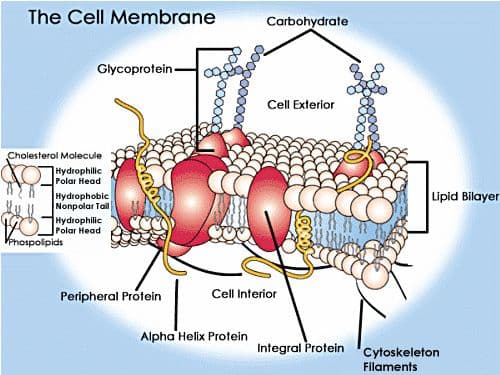The fluid mosaic model is the term used to describe the structure, components, and behavior of cell membranes. The key components of this model are:
-
The membrane is fluid. The lipids, proteins, and carbohydrates that make up and are embedded in the membrane are not static and can move around.
-
There are proteins, lipids, and carbohydrates embedded in the membrane in a patchwork “mosaic”. These have a variety of roles in cell signaling, the transport of molecules, and other cellular functions.
Membrane Proteins
Membrane proteins are an integral part of the fluid mosaic model. In addition to the lipid bilayer, the cell membrane also contains a number of proteins. While the lipid bilayer provides the structure for the cell membrane, membrane proteins allow for many of the interactions that occur between cells. As we discussed in the previous section, membrane proteins are free to move within the lipid bilayer because of its fluidity. Although this is true for most proteins, they can also be confined to certain areas of the bilayer with enzymes. Membrane proteins perform various functions, and this diversity is reflected in the significantly different types of proteins associated with the lipid bilayer.
Cholesterol
Cholesterol is a steroid that is found in the cell membrane. Cholesterol disrupts the order of the phospholipid bilayer and this helps the cell maintain a fluid membrane at low temperatures and retain some rigidity at high temperatures. By doing this, cholesterol stabilizes the membrane and reduces the permeability of the membrane.
The Cell Surface
The protein and lipid cell membrane also contains layer of carbohydrate chains on its outer surface. The exact composition and distribution of these chains is very diverse. The chains are involved with cell to cell signaling. Some of these carbohydrates are further linked to lipids. These molecules are called glycolipids and are important in cell recognition and communication.

Figure 2.13: A detailed view of a Cell Membrane (phospholipid bilayer and associated proteins)













